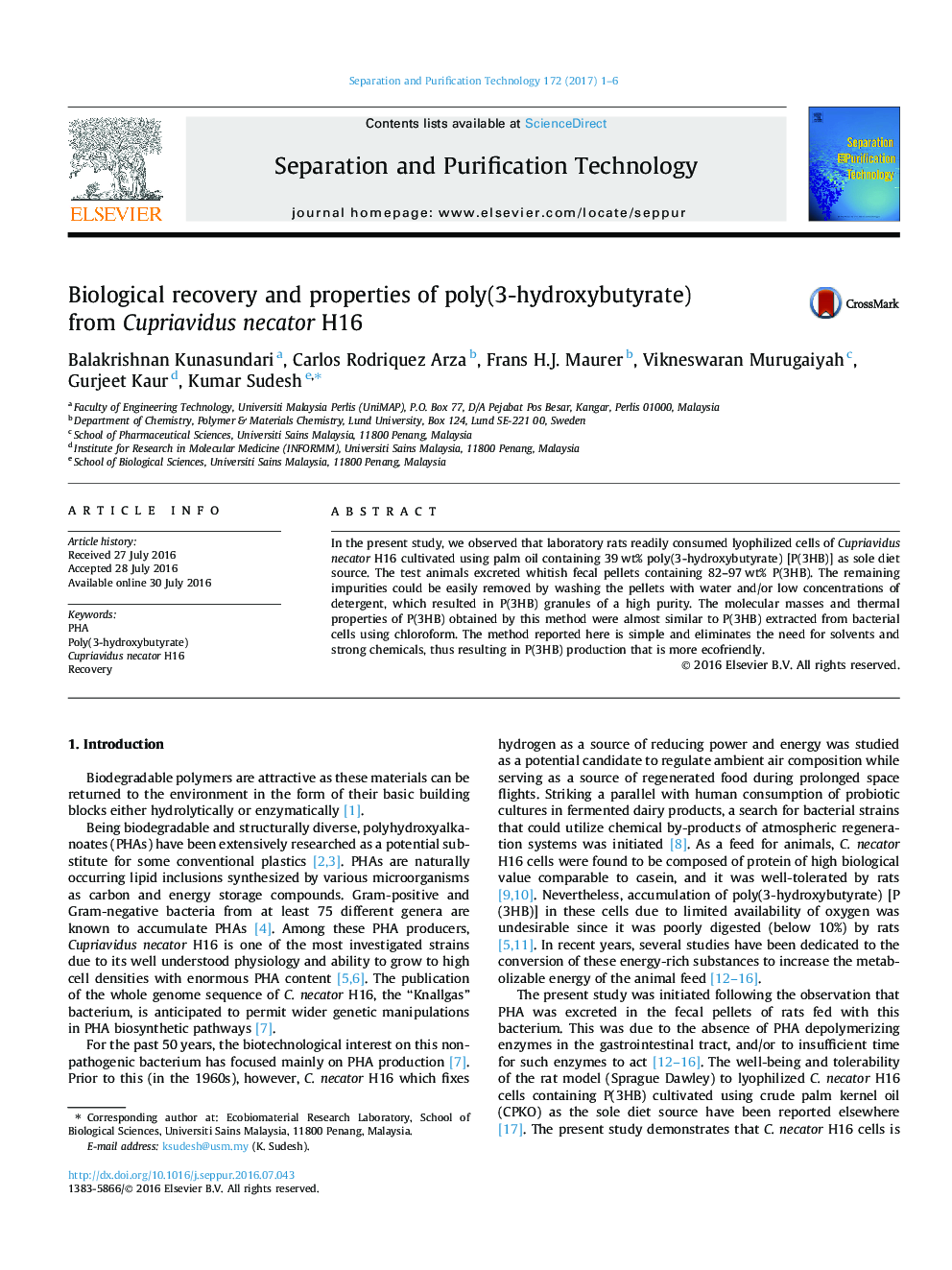| کد مقاله | کد نشریه | سال انتشار | مقاله انگلیسی | نسخه تمام متن |
|---|---|---|---|---|
| 639736 | 1456948 | 2017 | 6 صفحه PDF | دانلود رایگان |
• A new biological recovery method of poly(3-hydroxybutyrate) [P(3HB)] was developed.
• The biologically recovered P(3HB) was purified and characterized.
• Molecular masses and thermal properties of biological and chloroform recovered P(3HB) are comparable.
• This method avoids the need for solvents and strong chemicals.
In the present study, we observed that laboratory rats readily consumed lyophilized cells of Cupriavidus necator H16 cultivated using palm oil containing 39 wt% poly(3-hydroxybutyrate) [P(3HB)] as sole diet source. The test animals excreted whitish fecal pellets containing 82–97 wt% P(3HB). The remaining impurities could be easily removed by washing the pellets with water and/or low concentrations of detergent, which resulted in P(3HB) granules of a high purity. The molecular masses and thermal properties of P(3HB) obtained by this method were almost similar to P(3HB) extracted from bacterial cells using chloroform. The method reported here is simple and eliminates the need for solvents and strong chemicals, thus resulting in P(3HB) production that is more ecofriendly.
Journal: Separation and Purification Technology - Volume 172, 1 January 2017, Pages 1–6
